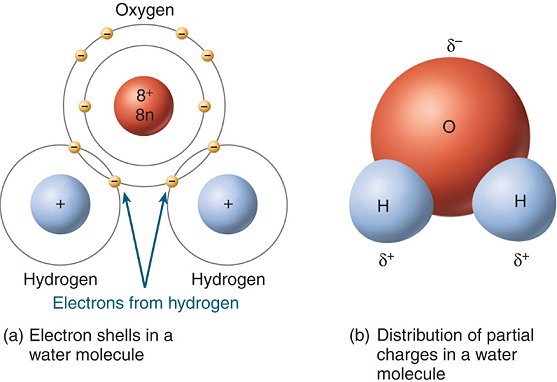Nutrition
Being a plan, Populus deltoides acquires its nutrients through the roots and allows carbon dioxide to enter through its leaves in order to make sugars via photosynthesis. The tree can live on impoverished sands and clays. However, for maximum growth, it requires moist, sandy or silt loams that are near rivers or streams. Once it acquires its nutrients, they are internally transported with the vascular system of the tree. Due to the extreme tall height of some of the cottonwoods, this internal transportation must be able to carry water, minerals, and food down and up a great distance.
 As mentioned earlier, the water and other nutrient acquisition is achieved
through the roots. An intriguing question is how are those nutrients
and water able to reach the top of the tree? Many factors play a role
in this process. Remember that water is polar, making the water
molecules themselves stick to one another and making water have a high
tendency to be attracted to other polar molecules. These two concepts
are cohesion and adhesion. The evaporation of water from the leaves is
called transpiration. This reduces the water potential in the leaves
and water moves from regions of high water potential to low water potential.
Therefore, water from the xylem moves into the leaves. Water is not
pushed up to the top of the trees, but pulled due to a combination of
reasons.
As mentioned earlier, the water and other nutrient acquisition is achieved
through the roots. An intriguing question is how are those nutrients
and water able to reach the top of the tree? Many factors play a role
in this process. Remember that water is polar, making the water
molecules themselves stick to one another and making water have a high
tendency to be attracted to other polar molecules. These two concepts
are cohesion and adhesion. The evaporation of water from the leaves is
called transpiration. This reduces the water potential in the leaves
and water moves from regions of high water potential to low water potential.
Therefore, water from the xylem moves into the leaves. Water is not
pushed up to the top of the trees, but pulled due to a combination of
reasons.
In the phloem, the flower of sugars is allowed by sieve-tubes. These sieve-tubed members are in actuality, controlled by the companion cells. The most popular theory of phloem transport is the Mass Flow Theory. As there is a high concentration of sucrose in the sieve-tubes, water flows in from the xylem via osmosis, and creates pressure. Active transport is needed to get sugar to flow into sieve-tubes that already have high sugar concentrations. Sinks are where sugar is drained off and sources are where sugars are constantly added. Sinks can be any storing, growing, or metabolizing area and sources are typically leaves. Ultimately, unlike the xylem transportation, the sugars are pushed down the phloem. The cottonwood can serve as a host to other organisms including the cottonwood borer which you may read more about under Interactions.
Back to HOME page
